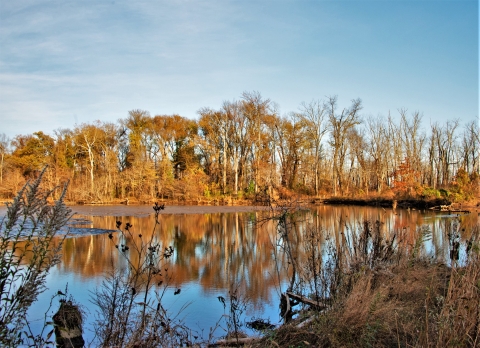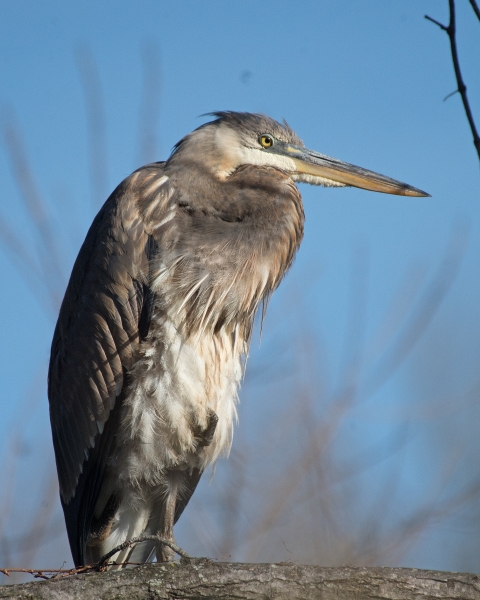What We Do
Wildlife conservation is at the heart of the National Wildlife Refuge System. It drives everything on U.S. Fish and Wildlife Service lands and waters managed within the Refuge System, from the purposes for which a national wildlife refuge national wildlife refuge
A national wildlife refuge is typically a contiguous area of land and water managed by the U.S. Fish and Wildlife Service for the conservation and, where appropriate, restoration of fish, wildlife and plant resources and their habitats for the benefit of present and future generations of Americans.
Learn more about national wildlife refuge is established to the recreational activities offered to the resource management tools used. Using conservation best practices, the Refuge System manages Service lands and waters to help ensure the survival of native wildlife species.
Management and Conservation
Refuges deploy a host of scientifically sound management tools to address biological challenges. These tools span active water management to wilderness character monitoring, all aimed at ensuring a balanced conservation approach to benefit both wildlife and people.
Featherstone national Wildlife Refuge staff manages the refuge’s wetlands, uplands, and shoreline with a variety of inventory, monitoring, and protection methods. Surveys and research efforts occur with the help of partners, volunteers, and refuge staff. The refuge is responsive to threats from non-native species, climatic changes, and outside pressures. Continuing efforts to protect the integrity of the refuge wildlife, habitats and cultural resources is a priority. Management includes limiting access and monitoring. Closures to the public are for the protection of flora, fauna, and resources as well as human health and safety.
Comprehensive Conservation Planning
The National Wildlife Refuge System Improvement Act of 1997 requires comprehensive conservation plans for each national wildlife refuge national wildlife refuge
A national wildlife refuge is typically a contiguous area of land and water managed by the U.S. Fish and Wildlife Service for the conservation and, where appropriate, restoration of fish, wildlife and plant resources and their habitats for the benefit of present and future generations of Americans.
Learn more about national wildlife refuge . The purpose of these plans is to specify a management direction for refuges for a timespan of 15 years. The goals, objectives, and strategies for improving refuge conditions—including the types of habitat to be provided, partnership opportunities and management actions needed to achieve desired conditions – are described in the comprehensive conservation plan.
The final, combined comprehensive conservation plan for Elizabeth Hartwell Mason Neck National Wildlife Refuge and Featherstone National Wildlife Refuge was completed in September 2011. This document represents years of work among federal and state agencies, local and regional officials and communities, conservation organizations, and user groups.
Resource Management
U.S. Fish and Wildlife Service manages the refuge in various ways.
Public access is limited to avoid disturbance of nesting areas.
Trapping is a wildlife management tool used on some national wildlife refuges, including those in the Potomac River National Wildlife Refuge Complex. Trapping may be used to protect endangered and threatened species or migratory birds, or to control certain wildlife populations. The U.S. Fish and Wildlife Service also views trapping as a legitimate recreational and economic activity when there are harvestable surpluses of fur-bearing mammals. Outside of Alaska, refuges that permit trapping as a recreational use may require trappers to obtain a refuge special use permit. Signs are posted on refuges where trapping occurs. Contact the refuge manager for specific regulations.
Habitat and wildlife management decisions on the refuge are supported by scientific research that considers the needs of wildlife and the conditions of the ecosystem. Additionally, this knowledge informs how we provide wildlife-related education and recreation for the American people.
Laws and Regulations
Being a national wildlife refuge national wildlife refuge
A national wildlife refuge is typically a contiguous area of land and water managed by the U.S. Fish and Wildlife Service for the conservation and, where appropriate, restoration of fish, wildlife and plant resources and their habitats for the benefit of present and future generations of Americans.
Learn more about national wildlife refuge entails great responsibility. There are several laws and regulations we must abide by for the benefit of the wildlife we protect.


